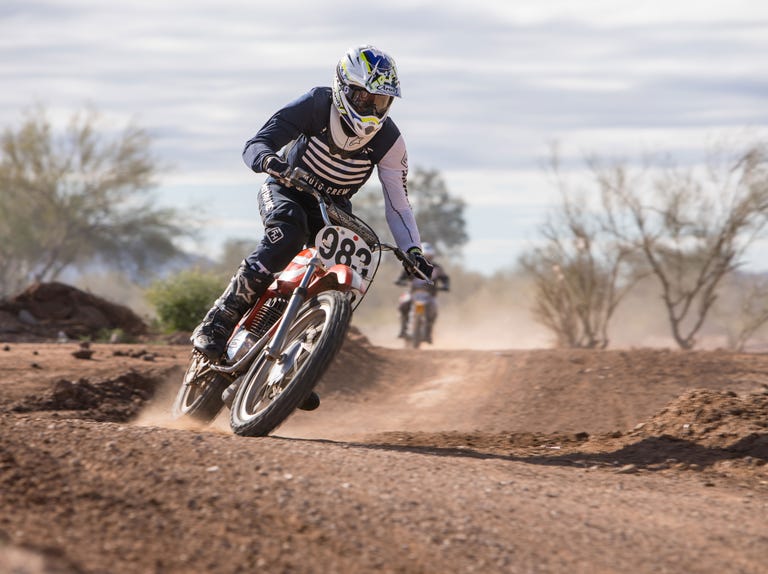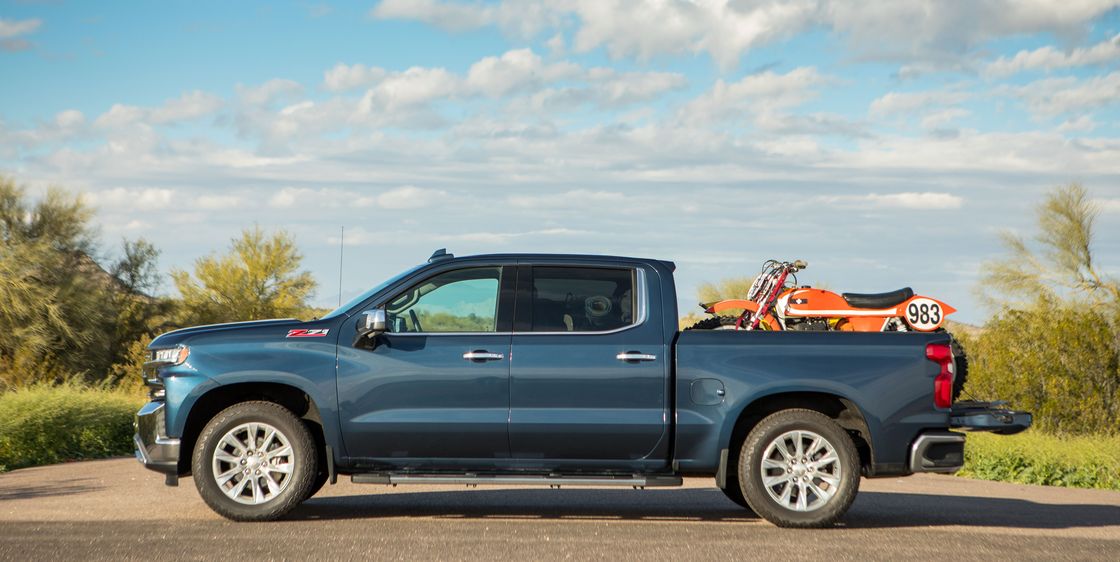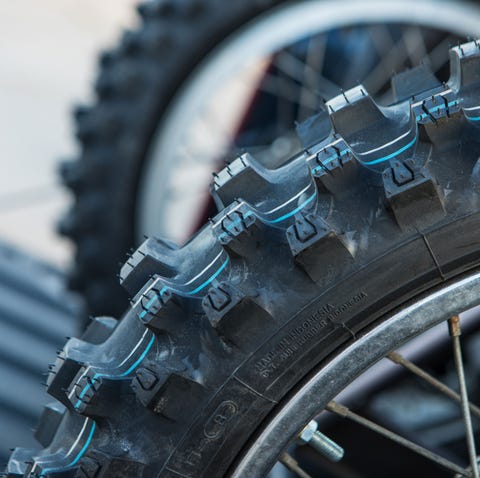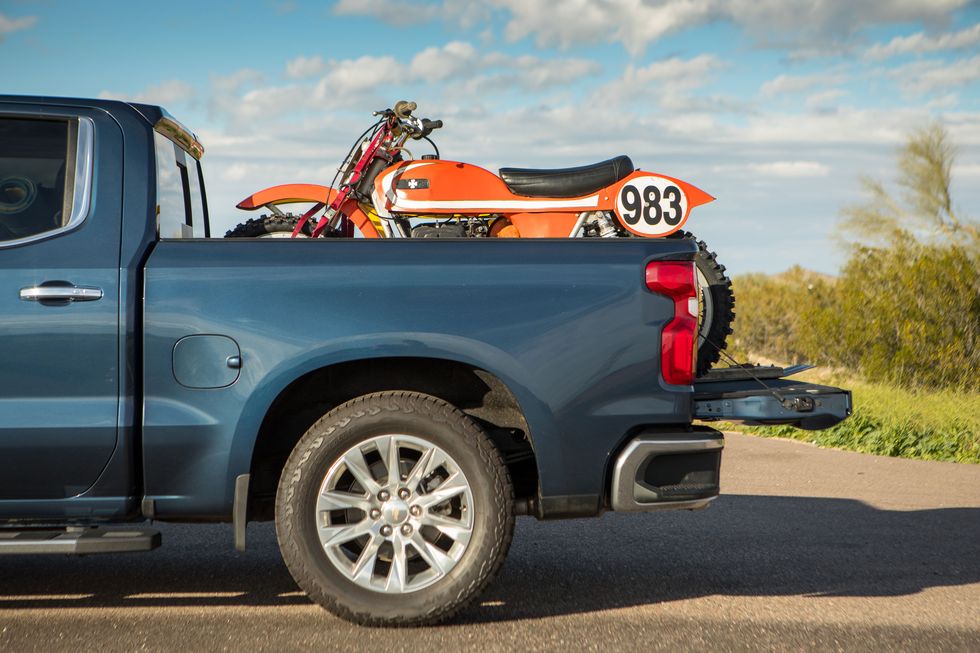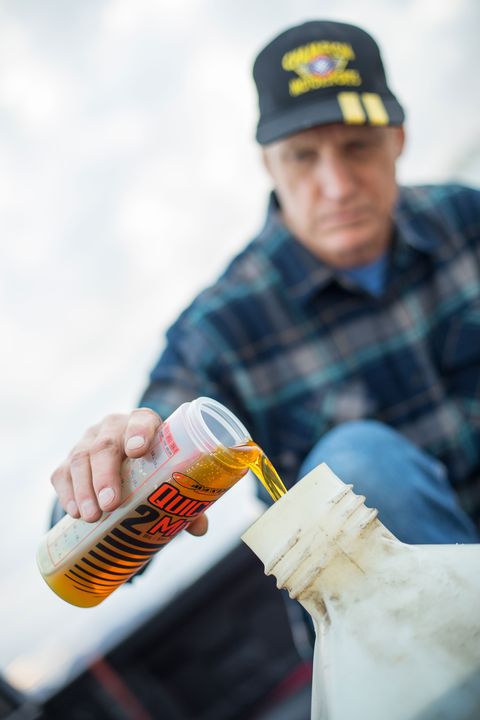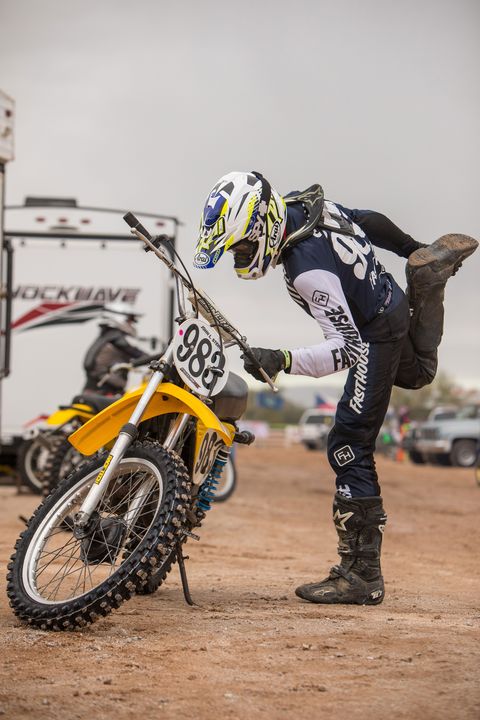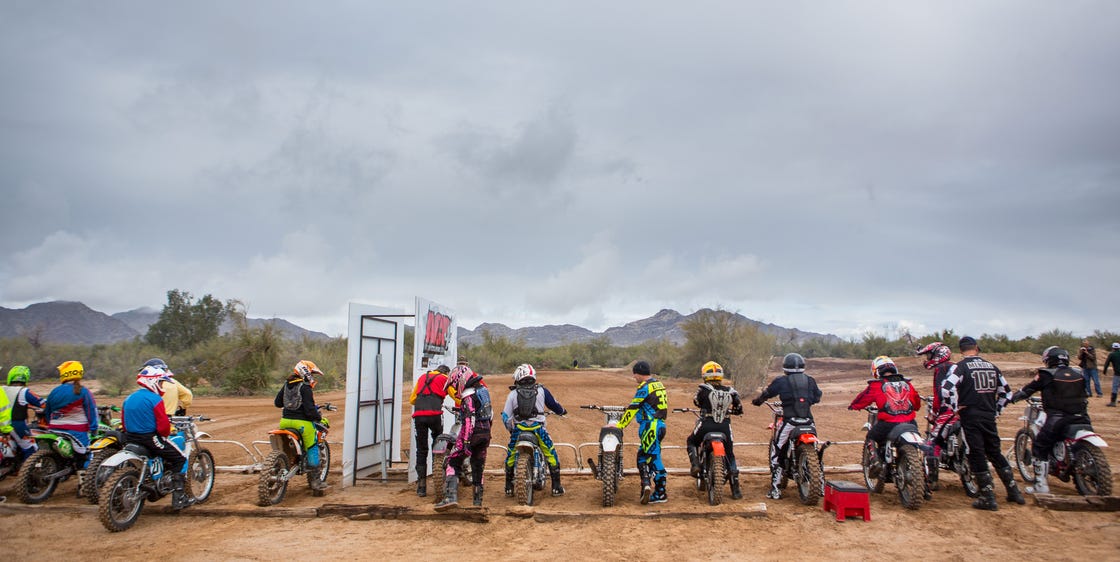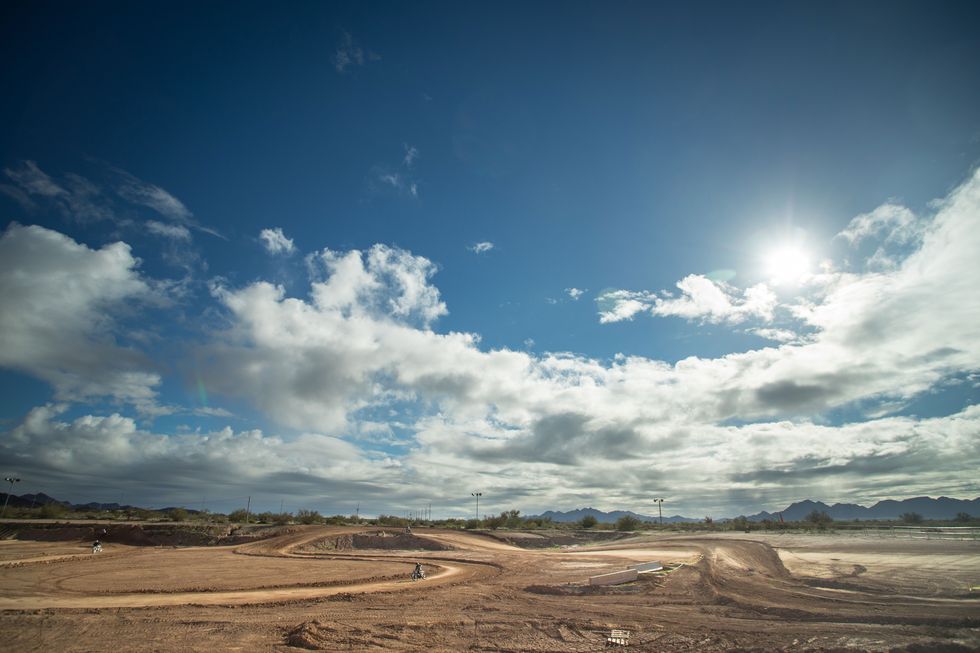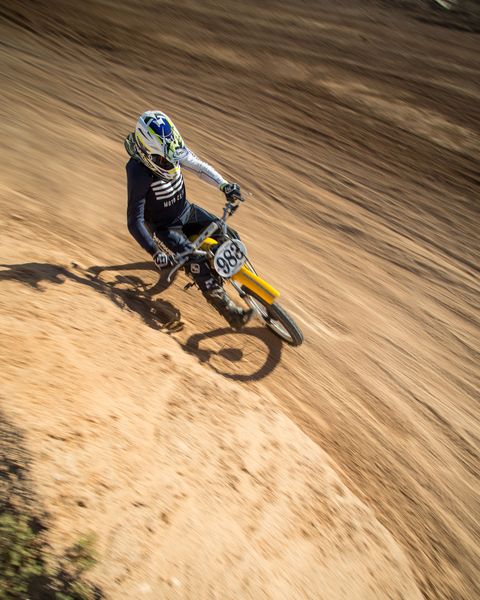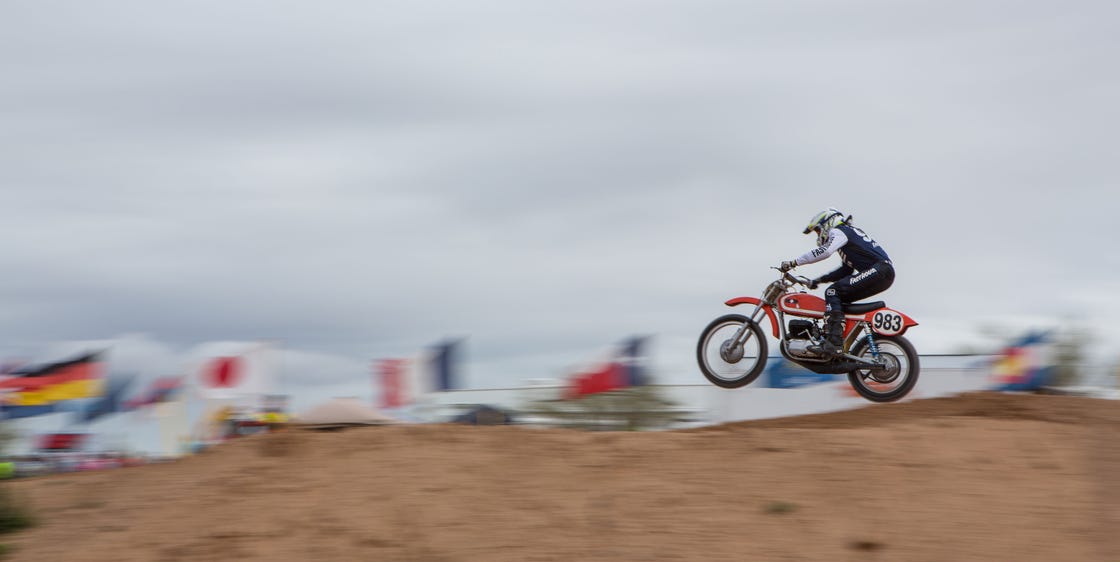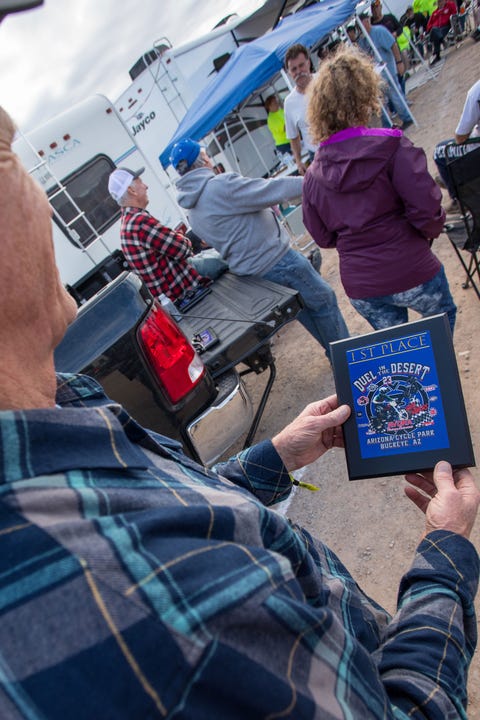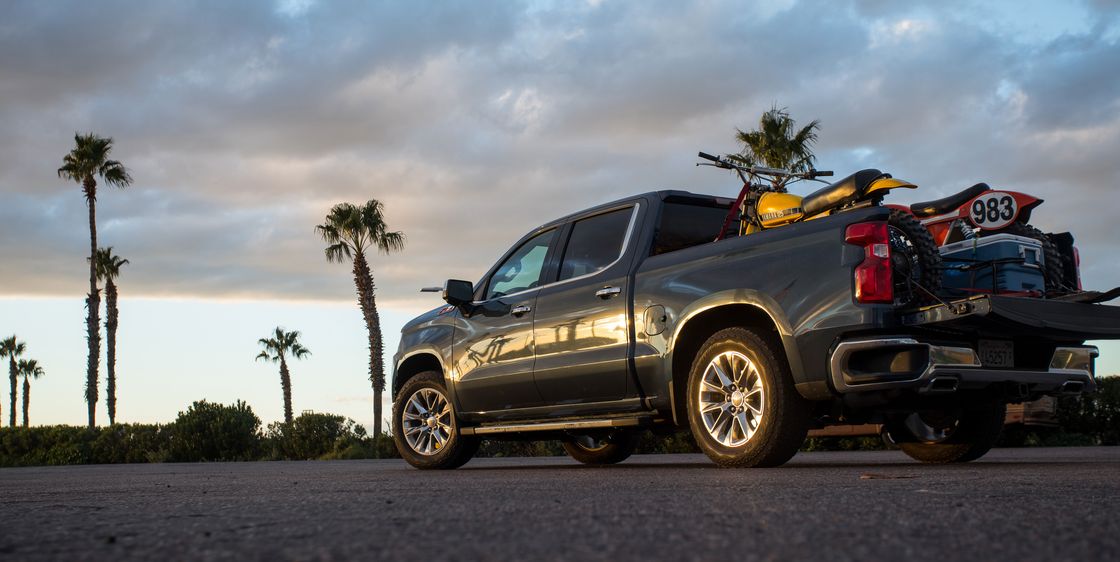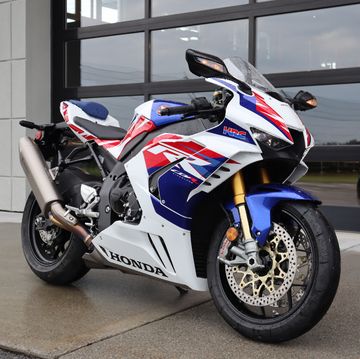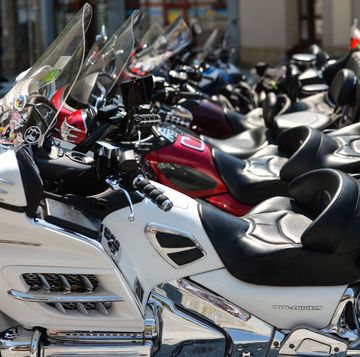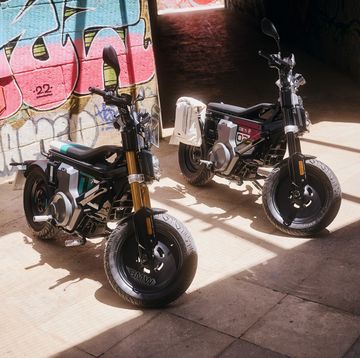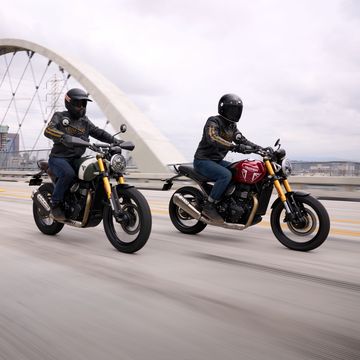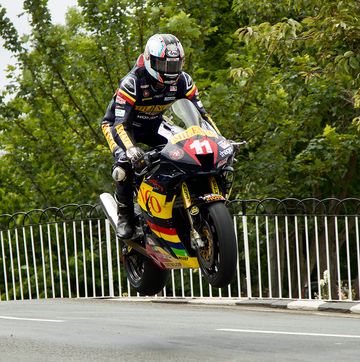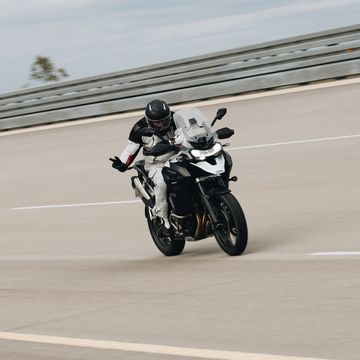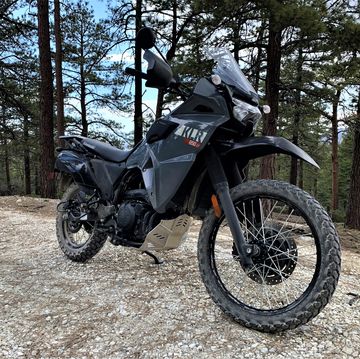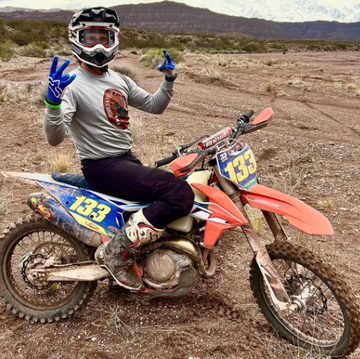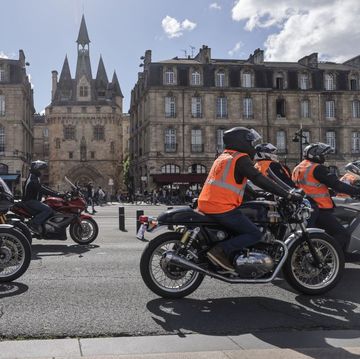One part romantic and 10 parts masochistic, vintage motocross must surely inhabit the fringes of the collector hobby. The romance of, say, a 1971 Mustang Boss 302 and the Spanish 1971 Ossa Stiletto TT shown here may be identical, as both are mechanical touchstones from another time and place, now nearly a half century past.
But in terms of the experience, tooling around in the Mustang is like lazing in a featherbed compared to the bed of nails that is a racing Stiletto—and motocross. The sport and the two-stroke, two-wheeled machine built to contest it are a perfect pairing. They are simultaneously gutsy and gleeful, dreamlike and dangerous. And also, raw, reflexive and animalistic.
While SVRAAmerican Historic Racing Motorcycle Association
has unitized vintage car racing, with vintage motocross the national organization is the , or AHRMA. In 2019, the Tennessee-based organization scheduled 24 national races from New York to California and from Florida to Washington, and sanctioned dozens more regional events. A dozen vintage classes include machines up to 1974, while skill-based (i.e., novice, intermediate and expert) categories, 10-year age groups and a women’s class mix riders of similar caliber in this most demanding of sports. If you’re 16 or older and like vintage dirt bikes, there’s an AHRMA class for you.
With several old machines moldering in the garage, I convinced motorsports photographer Seth DeDoes that a weekend trek from SoCal to Arizona for an AHRMA national would be a great time. (I might have embellished a bit.) Further sweetening the pot, Chevrolet provided a new-platform Silverado 4WD Crew Cab LTZ for the trip. With the truck packed to the ceiling and its bed full, our flight eastward from LA to Buckeye, Arizona, is fast and easy, compromised only by the LTZ’s hard seats and 22-inch wheels with harsh-riding low-profile tires.
The aforementioned Ossa is a 250cc two-stroke racer built in Barcelona. Featuring shapely but frail fiberglass bodywork and a powerful—but likewise frail—engine, it’s fun to ride and had previously been rebuilt in 2011. Dunlop’s latest MX33 soft- and intermediate-terrain knobby tires fit perfectly, and after modest attention paid to other mechanicals the bike was ready. Hagerty values a good Stiletto TT at $6,100 today.
Next up is a 1974 Yamaha MX125A, a proletariat motocrosser that novices bought in the day. This particular bike carries a meaner YZ125A engine and burlier YZ250B suspension, making it an innocent looking bumblebee with a sharp sting. All it needed was air-filter servicing, renewed gearbox oil and another set of grippy Dunlop MX33s. Just three years newer than the ’71 Ossa, the Yamaha is a product of a different mindset. Japan was just about 30 years past wartime annihilation but had already mastered world-class manufacturing, and the difference in design, engineering approach and quality is marked. NADA pegs a good, stock, ’74 MX125A at $1,460, a relative bargain.
Lime Rock Park the Arizona Cycle Park is not. Situated on reclaimed land within sight of a state prison, the MX facility is nevertheless rather artfully done. Utilizing what looks like an old quarry, several tracks wind around a massive sunken area, giving a great view for those watching up on the rim. Meanwhile, the more recently added vintage track—an easier circuit that lacks the breathtaking jumps characterizing modern tracks—occupies a relatively flat area on the perimeter of the facility.
Arriving the evening before race day, DeDoes and I busy ourselves unloading the bikes and taping plastic over their fuel tanks and seats in anticipation of forecasted showers, and preparing respective sleeping “quarters”: Seth in a streamlined mountaineering tent in the dirt and me inside the Silverado’s rear cab. As the rains attack Buckeye after midnight, it's hard to tell who’d made the smarter (or dumber) choice. The ripping wind, sporadic showers and drone of a nearby generator give DeDoes a fitful night’s sleep. And as I painfully discover, the Silverado rear floor is no place for camping. A central hump creates a midspine pressure point that I can't eliminate by artful padding with my sleeping bag, jacket or towels. However, nosed into the wind, the Silverado stays nearly silent inside; the aero and insulation quelled nearly all evidence of the generator and wind howling outside. Impressive.
Dawn can't come soon enough, and at 7 a.m. race organizers turn up some sunny ’60s rock, kindly lady volunteers man, so to speak, the signup tables, and race day begins.
Practice is minimal—just a few five-lap sessions assigned to different bike classes and rider groupings. Far from lengthy, it’s just enough to learn the track layout, in this case a serpentine dirt course that rises and falls modestly, and darts and feigns around desert shrubs. “If you go off course, don’t hit a bush,” warns an official. “They’ll be pulling needles out of you forever!”
As in other forms of racing, starts are crucial in motocross. In most AHRMA vintage races, 10 to 20 riders line up behind steel gates. When the starter moves a lever inside a plywood “doghouse,” the gates drop in unison and the race is on, with riders rushing to the bottleneck of the first turn. Get a good launch and you have a shot at escaping the pack with the leaders, but muff the start by wheely-ing, spinning the rear wheel or bogging the engine and you’ll spend the first lap eating dirt clods and dust. Either way, motocross is as exciting as big-wave surfing or skiing off-piste; it’s barely contained chaos.
The bedlam of the start doesn’t exactly end after lap 1, as the mechanical character of the bikes keeps giving and giving … punishment. These nearly half-century-old two-stroke motocross bikes are demons, really. Developing frenetic power over a narrow rpm band is the signature of the vintage two-stroke MX engine, and along with this comes frightful vibration and noise emanating from the thin-wall steel expansion-chamber exhaust, designed to augment cylinder charging and scavenging within a specific rpm range. The chassis, seat, footpegs and handlebars alight with frenetic buzzing, meaning that racing a vintage motocrosser in a pack on slippery terrain delivers ample brain activation, thank you.
Good athletes make any sport look easy, and the same applies in motocross; although it may appear as though riders are just “sitting” on their bikes, this is hardly the case. Racing MX vigorously is akin to working every machine in the gym simultaneously at maximum effort atop the greased roof of a moving bus, while dressed in 15 or 20 pounds of boots, body armor, helmet and apparel. It’s a hot and heavy business, in which lean muscle mass and cardio fitness are your friends.
One might wonder what sort of people race vintage motocross. By observation, it’s majorly boomers imprinted during the 1970s by the excitement, machinery and popularity of the sport. Now decades later, they still find it enrapturing, recognizing that the era and activity represents a highpoint in their lives. Who can argue that?
The Buckeye race day mercifully proved pleasantly cool and sunny. Temps are important due to the burden of protective gear—which just might be the most of any activity save military exercises, spacewalking or hardhat diving—plus the heavy exercise that motocross requires. (For instance, in monitoring myself during 5K and 10K running races and racing motocross, running topped MX in maximum sustained heart rate by just 9 BPM or 6%—clinically defining motocross as heavy-duty exertion.)
Waiting on the gate before a motocross start is a bit more nerve-wracking than starting a car race. The reason relates to fight or flight: Car races provide a warmup lap while a steel cage, belts and window net safeguard you inside the cockpit. On an MX bike there’s no sighting lap and it’s just you, the dirt and a bunch of spinning chains, sprockets and knobbies, bikes and bodies. Best of luck, Jack!
Motocross uses a two-moto (i.e., two-race) format. In professional AMA Motocross, each moto is 30 minutes, plus two laps. In AHRMA, due to the frailty of the older bikes (and some riders!) and manifold classes, motos are typically five laps. My Buckeye weekend includes two practice sessions and four motos, totaling about an hour of really hard work.
The Yamaha MX125A is hard as hell to launch. It’s tall and has a short wheelbase, and the aftermarket PVL electronic ignition on its built YZ125A engine has almost no flywheel. In the first of its two motos, the motor bogs and I get a poor run to the first turn, narrowly missing a pileup of bikes and riders before making some passes to finish second in Sportsman 125. Brutally slipping the clutch in the second moto netted a cleaner start, and the Yamaha pulled through for a class win.
The Ossa’s two motos hold more drama. The bike is easier to launch and gets to the first turn inside the top five both times. In the first turn of moto one, a big hit to the left rear number plate advises that someone got in too hot behind me, leaving bear-claw shaped rubber streaks on the white plate. That moto likewise netted a second in class.
The day’s final moto—among an amazing 34 races held in Buckeye that day—proves the Ossa engine’s swan song. After a good start and a diligent race, the motor sours halfway through the final lap, making ominous grinding sounds I can hear even above the din of other bikes and through the foam earplugs I always wear. The engine drags evermore in the final sectors, and then expires in the last turn. Hopping off, I pull in the clutch and push the bike across the line, far enough ahead of the next rider to score a class win. (A later teardown reveals a sheared crankpin—the bike had given its all.)
Regardless, two seconds and two wins results in two class overalls: Not a bad weekend. As well, 25 or so motocross laps at speed are plenty to tax the body. The post-races physical assessment: worked shoulders and forearms, “monkey butt” (don’t ask) and ringing ears, despite the earplugs. In my experience, karting or car racing work the upper arms more but the lower arms, hands and legs way less.
I like to call vintage two-stroke MX bikes the cruelest and most medieval devices money can buy. They’re loud, vibrate like a supercharged paint shaker, the suspension is at best just adequate and the brakes lack both power and feel. Comparatively, climbing into the Silverado LTZ at day’s end for the long drive back to SoCal is like an unexpected serving of smooth, tasty crème brûlée after a meal of rocks, dirt clods and sand. Although on our test unit I found the ride quality and seating less than comfortable, by comparison it was pure bliss.
And a worthy reward after a hard-fought day in the dirt.
